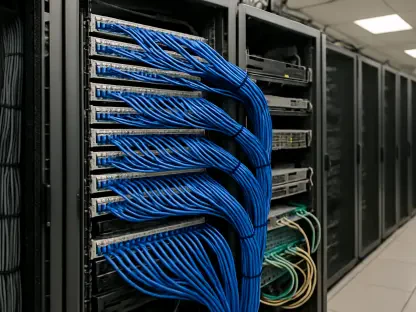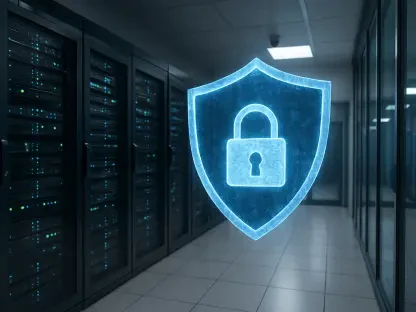Urban centers like New York, Washington D.C., and Dallas increasingly rely on the Internet of Things (IoT) to maintain connectivity, facing significant challenges in data storage, processing power, and efficient management to ensure seamless information flow and ecosystem sustainability. The imperative for municipal and county leaders to implement and secure these systems effectively is crucial to enhance local services and protect communities from growing cyber threats. From smart traffic lights to public safety networks, the role of advanced network management in safeguarding urban infrastructures cannot be overstated. With the accelerated digitization of public services, cities need robust measures to prevent disruptions and ensure continuous operation.
Building a Secure and Reliable Network Foundation
The foundation of any smart city initiative is a secure and reliable network that can adapt to various demands. This involves selecting the right technologies, integrating vendor-agnostic solutions, and assembling the right team to prioritize long-term adaptability and efficiency. Smart city infrastructures are inherently distributed, often extending to remote areas that lack existing technological infrastructure. Deploying IoT sensors in these regions necessitates network solutions that can bridge such gaps, ensuring comprehensive coverage. Thorough due diligence during the planning phase is essential to avoid costly replacements and inefficiencies as the city grows.
Choosing the most suitable network technology is a critical challenge in the planning phases of smart city projects. Some devices may integrate seamlessly with existing Wi-Fi networks due to proximity, while others might require cellular or 5G connections to function correctly. Evaluating potential networking technologies and future needs allows cities to make informed decisions, reducing the risk of obsolescence and ensuring cost-effective long-term solutions. Municipalities need to weigh factors such as scalability, maintenance needs, and the potential for technological advancement as they build their network backbones. This forward-thinking approach is key to the sustained success of smart city initiatives.
Integrating Diverse Network Technologies
Once appropriate technologies are chosen, the integration phase presents its own set of challenges that require expert management. Smart city systems typically require a medley of diverse network technologies to meet the varied needs of public safety, environmental monitoring, and more. This technological diversity can lead to silos of data and operations if not managed effectively. Advanced network management is crucial in unifying these disparate systems under a single framework, allowing for seamless communication and standardized practices across all components. This integration process involves harmonizing different communication protocols and ensuring interoperability between devices and platforms.
Integrating Wi-Fi, 5G, and other specialized networks under a unified management platform ensures efficient and cohesive operation. Consistent security practices, data protocols, and performance metrics are essential to maintain the integrity and functionality of the network. Municipalities must adopt standardized protocols for data transmission and storage, enabling different systems to work together seamlessly. The coherent integration of these networks also facilitates the sharing of information and resources, effectively enhancing the overall operation of smart city systems. By adopting a comprehensive network management strategy, cities can better monitor their systems, predict potential failures, and quickly respond to any issues that arise.
Addressing Cybersecurity Threats
Evolving cybersecurity threats are a significant concern for smart cities, underlining the importance of robust security measures. Data privacy is one of the most pressing risks, as cities collect vast amounts of sensitive data, including traffic, environmental sensor data, and personal information like license plate numbers and behavioral patterns. Safeguarding this information is paramount to prevent breaches that could jeopardize residents’ safety and privacy. Unauthorized access to critical devices that control essential city functions like streetlights and traffic signals is another significant cybersecurity threat.
Hacking these devices can directly impact public safety and city operations. Establishing strong access controls, routinely monitoring for malicious activity, and restricting device access through role-based permissions or multi-factor authentication are fundamental measures to defend against such risks. Municipalities must implement rigorous security protocols, including regular system updates and encryption of sensitive data. Additionally, ensuring that all IoT devices and networks are patched and up-to-date with the latest security measures is crucial. Effective cybersecurity strategies protect both the infrastructure and the data that flows through it, maintaining the integrity and reliability of smart city systems.
Collaboration Between IT and Security Teams
Effective collaboration between IT and security teams is a key strategy for safeguarding smart city networks from cyber threats, underscoring the need for unified efforts. Having both teams operate on the same technology platform or integrating their systems tightly promotes improved communication and expedited problem resolution. A unified dashboard allows for easier monitoring, troubleshooting, and response to potential issues in real-time. Security must be interwoven into every policy and practice, particularly in standard operating procedures (SOPs), to ensure that security measures are foundational rather than supplementary.
Involving security teams in the creation and review of SOPs from the outset is vital for proactively addressing potential vulnerabilities. This collaborative, holistic approach between IT and security teams is crucial in ensuring the reliability and protection of smart city networks. Regular training sessions and joint exercises can help foster better understanding and cooperation between the teams. By fostering a culture of continuous improvement and vigilance, cities can stay ahead of emerging threats and maintain the resilience of their smart city infrastructures.
Practical Advice for Municipalities
Urban centers such as New York, Washington D.C., and Dallas increasingly rely on the Internet of Things (IoT) to maintain connectivity but face significant challenges relating to data storage, processing power, and efficient management to ensure seamless information flow and ecosystem sustainability. Municipal and county leaders must effectively implement and secure these systems to enhance local services and protect communities from growing cyber threats. From smart traffic lights to public safety networks, the role of advanced network management in safeguarding urban infrastructures is crucial. Given the rapid digitization of public services, cities need strong measures to prevent disruptions and maintain continuous operation. Effective network management can help to prevent service interruptions and address potential cyber vulnerabilities, ensuring that vital city services remain functional and safe. Robust cybersecurity protocols are essential to safeguard sensitive information and maintain public trust in these increasingly interconnected urban systems.









